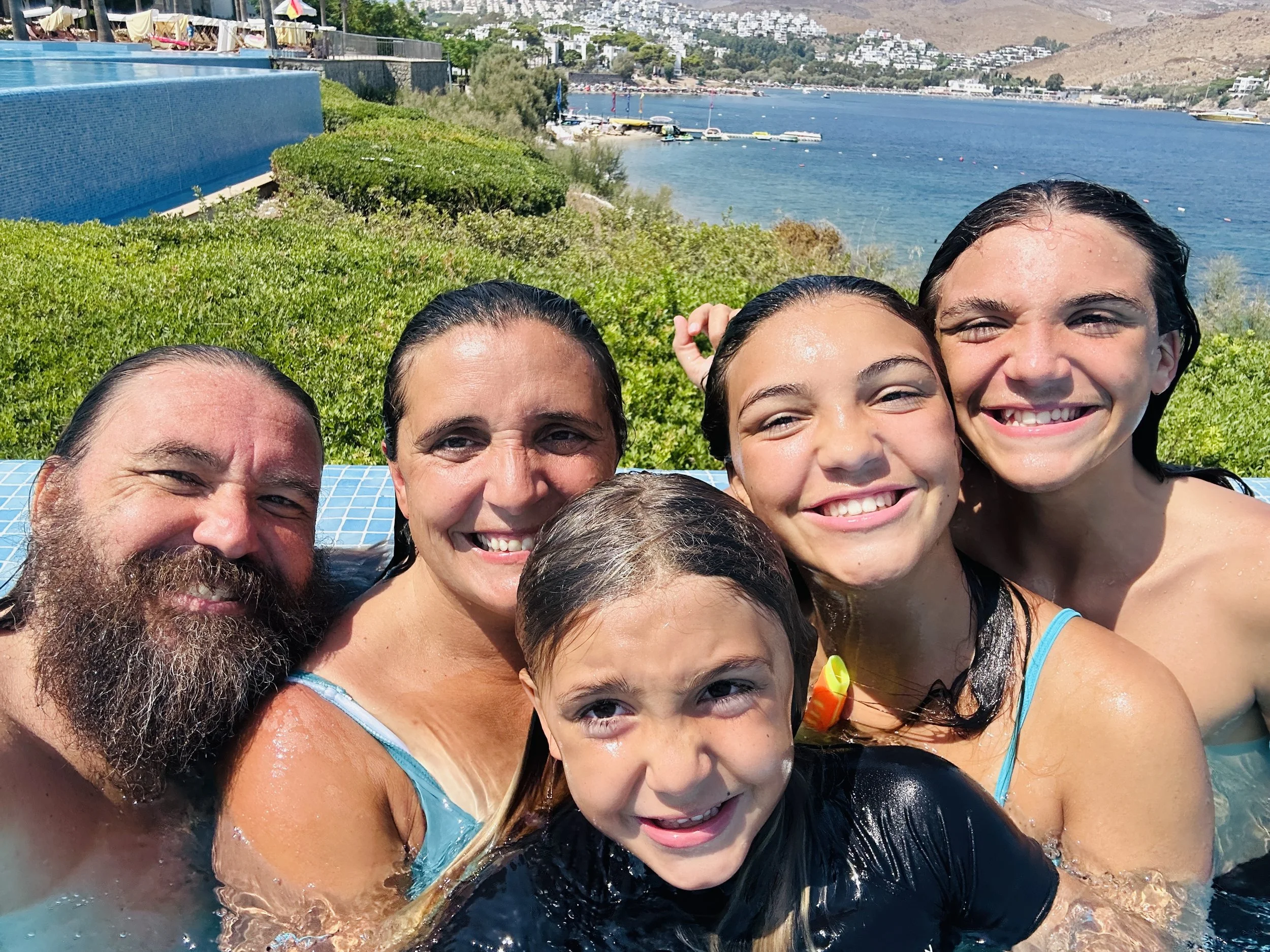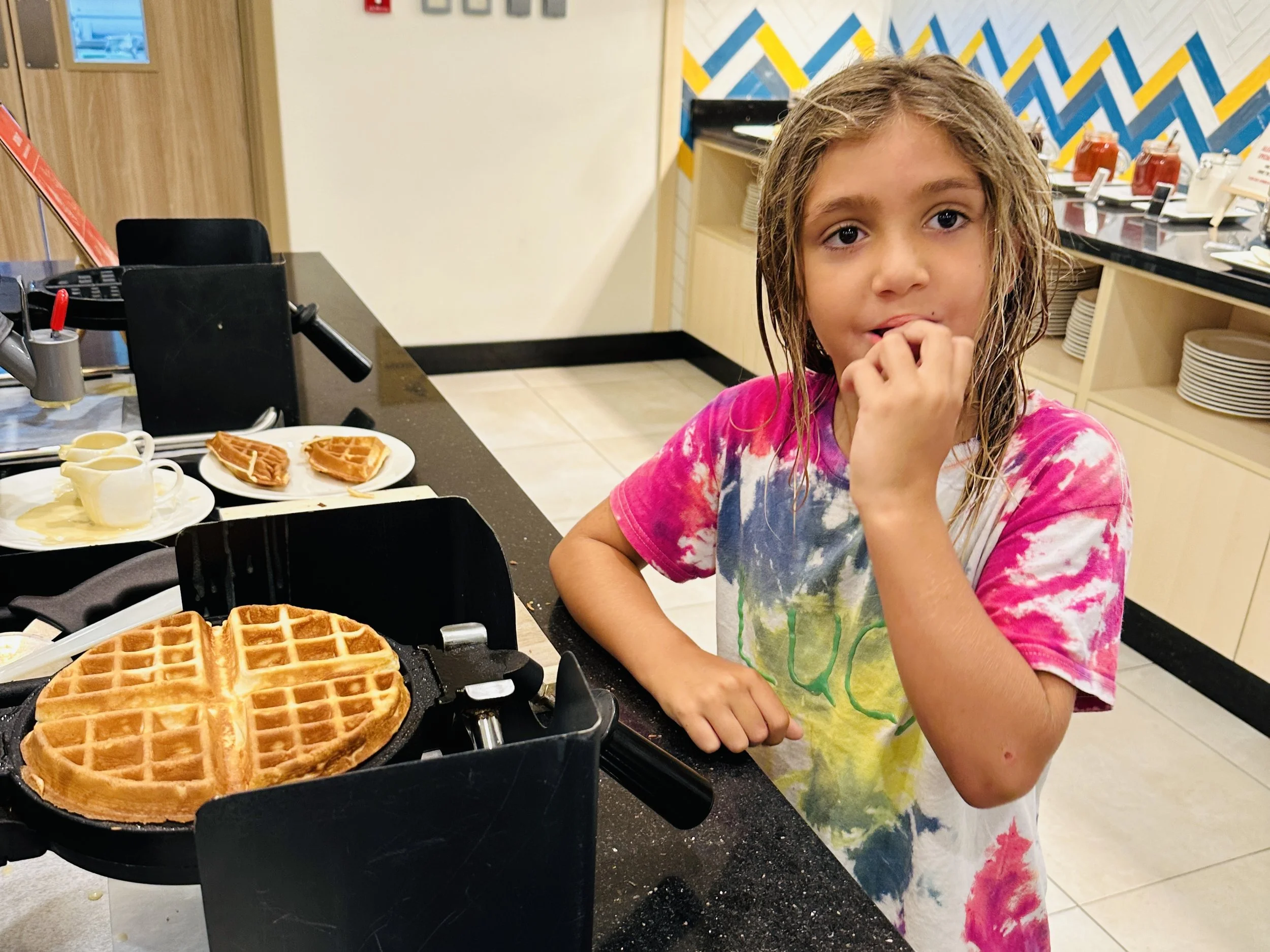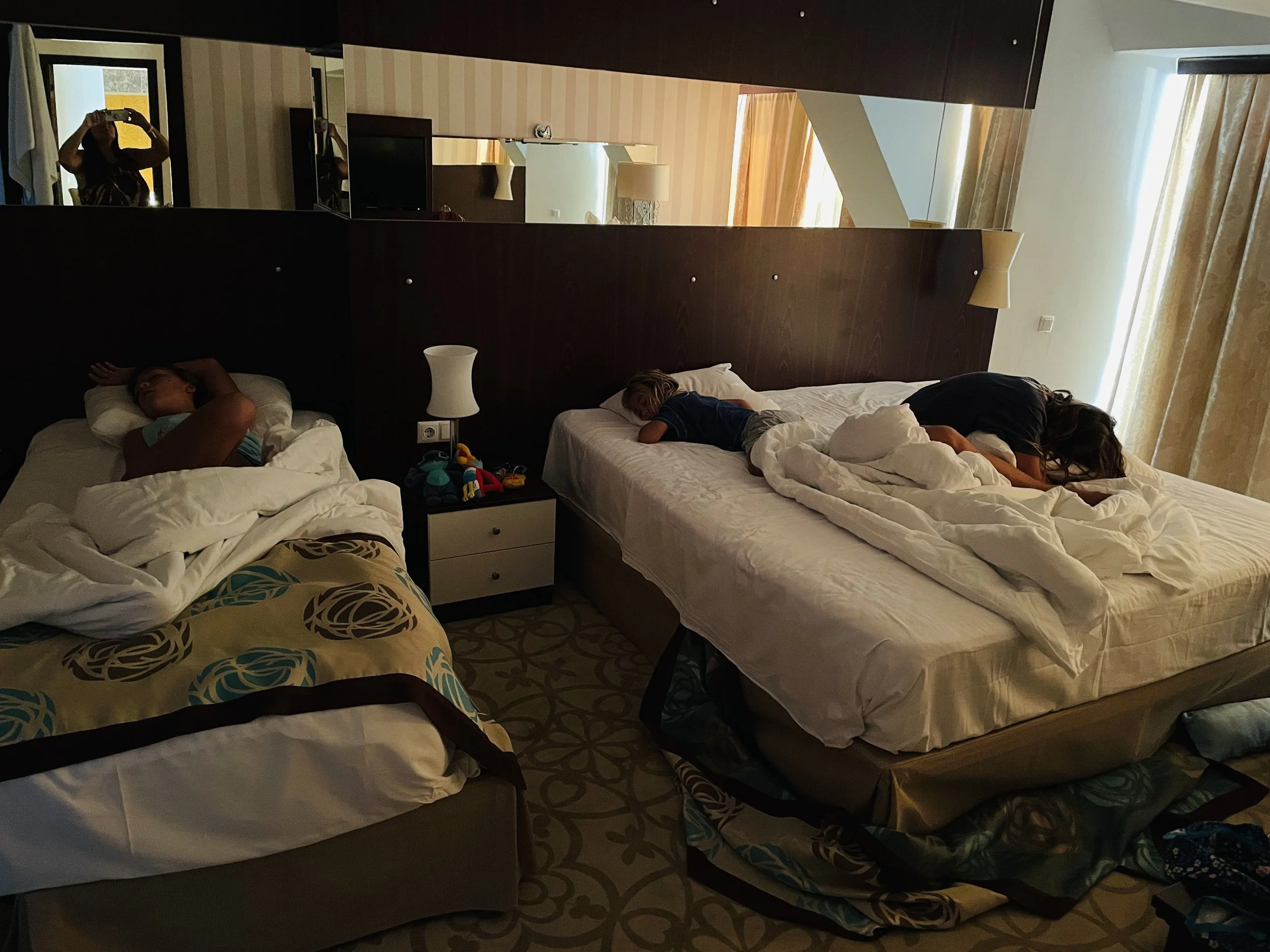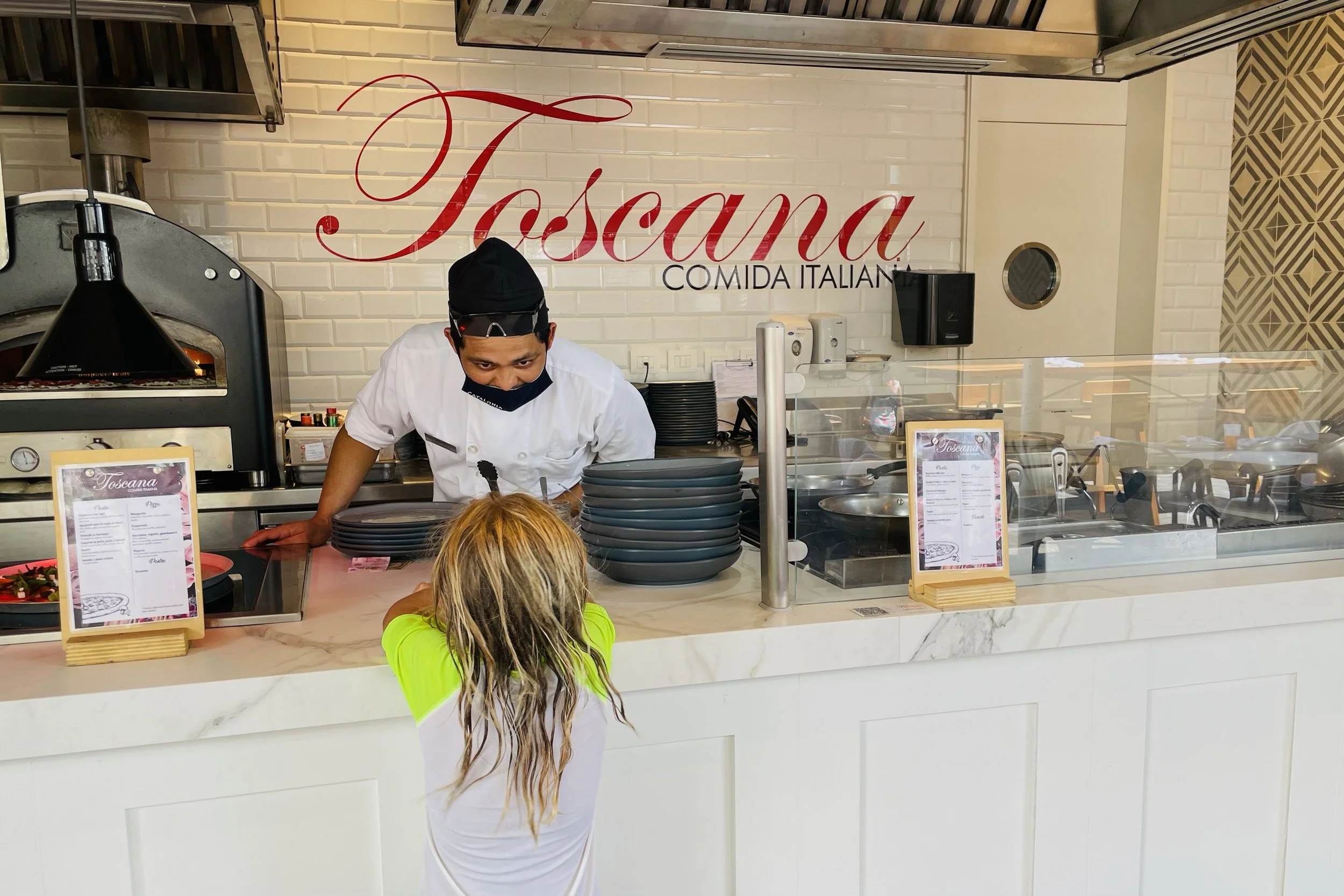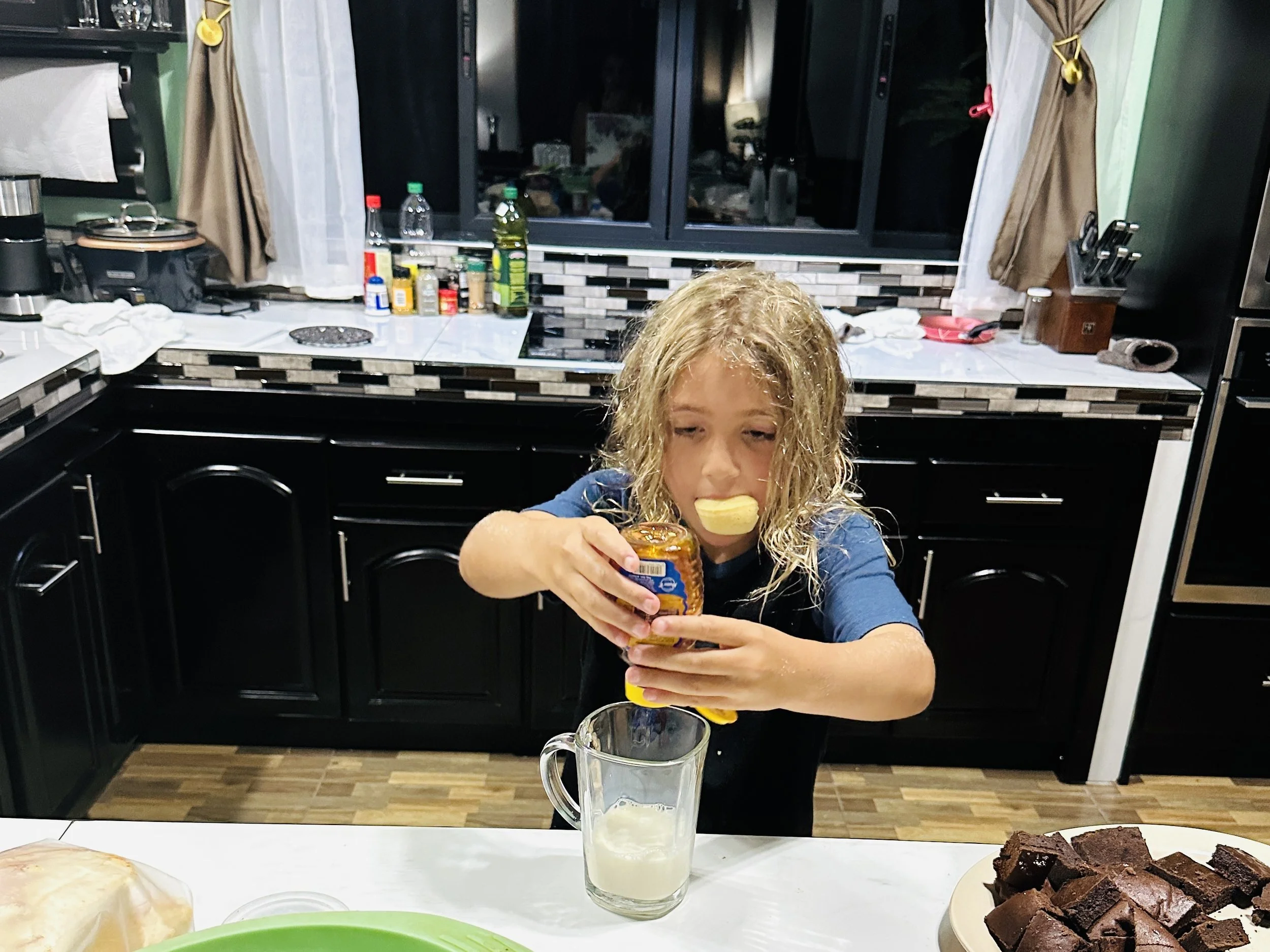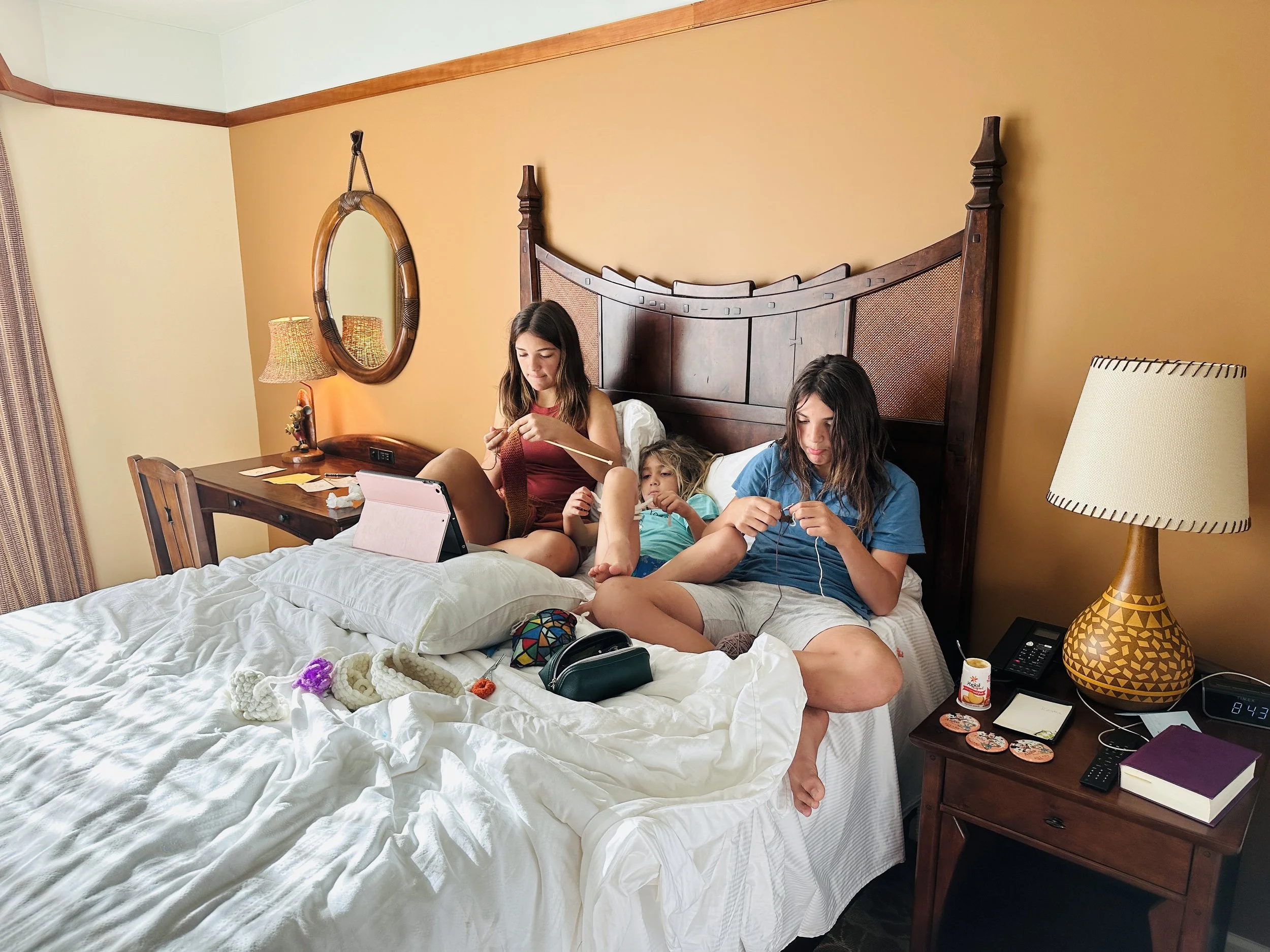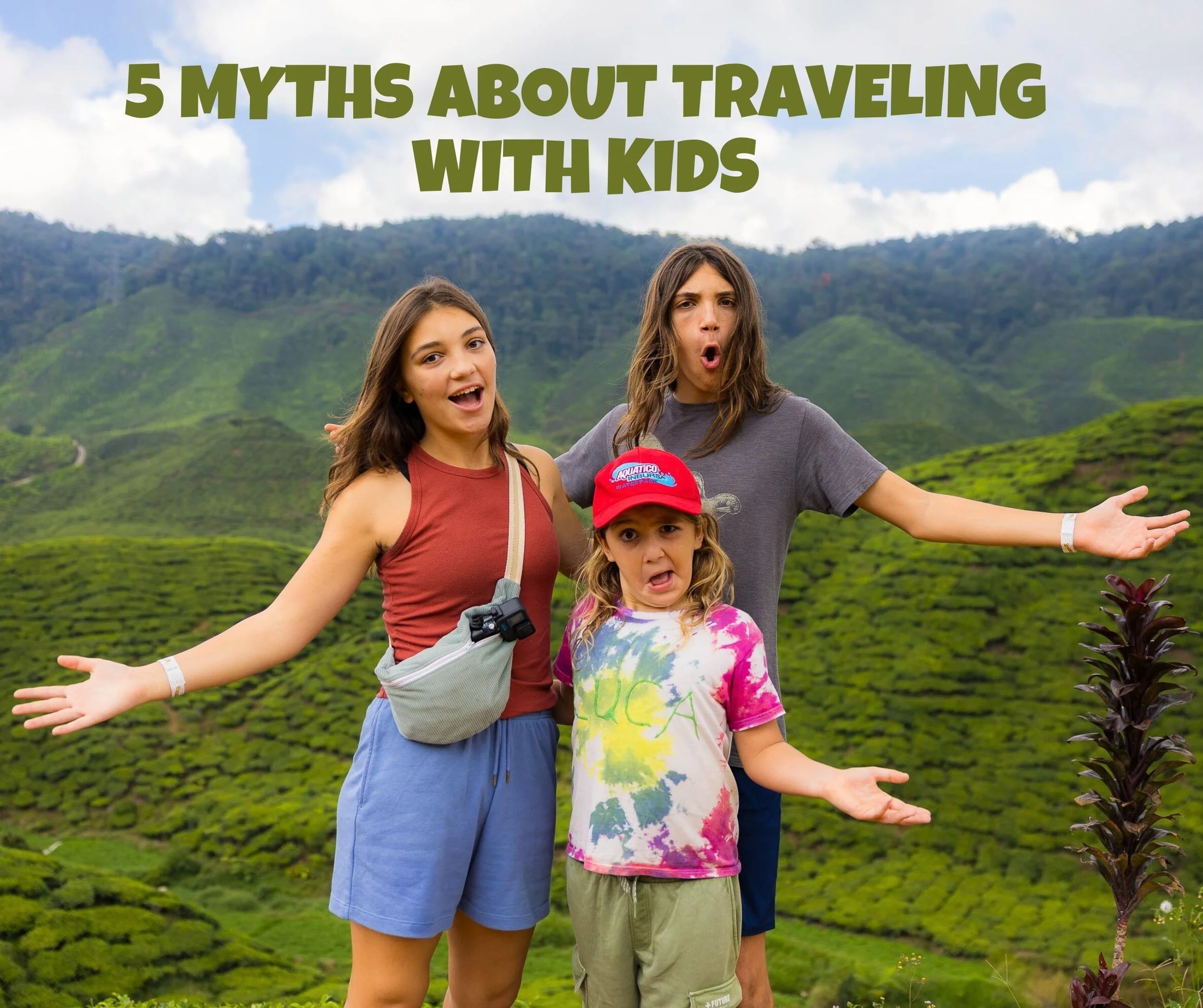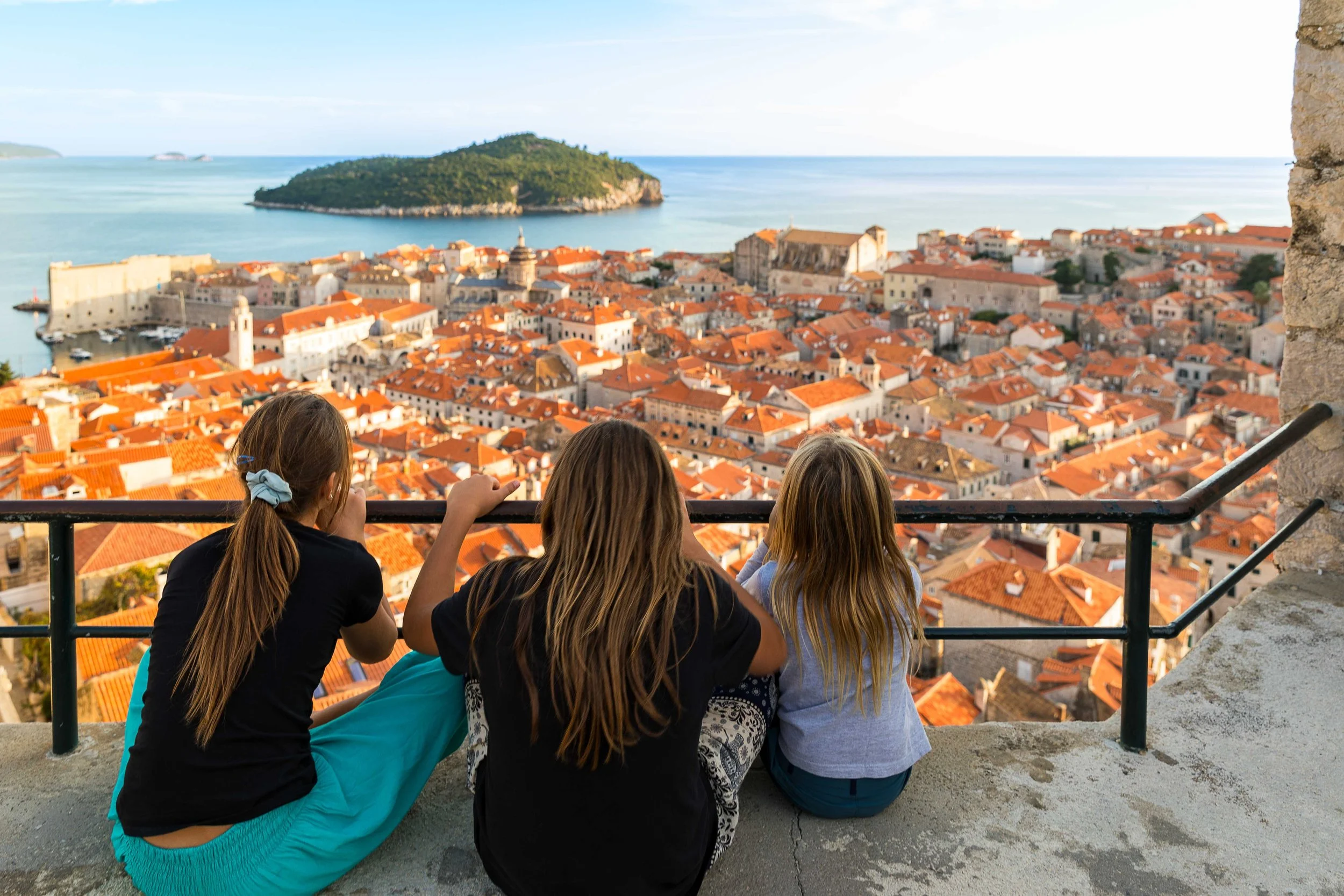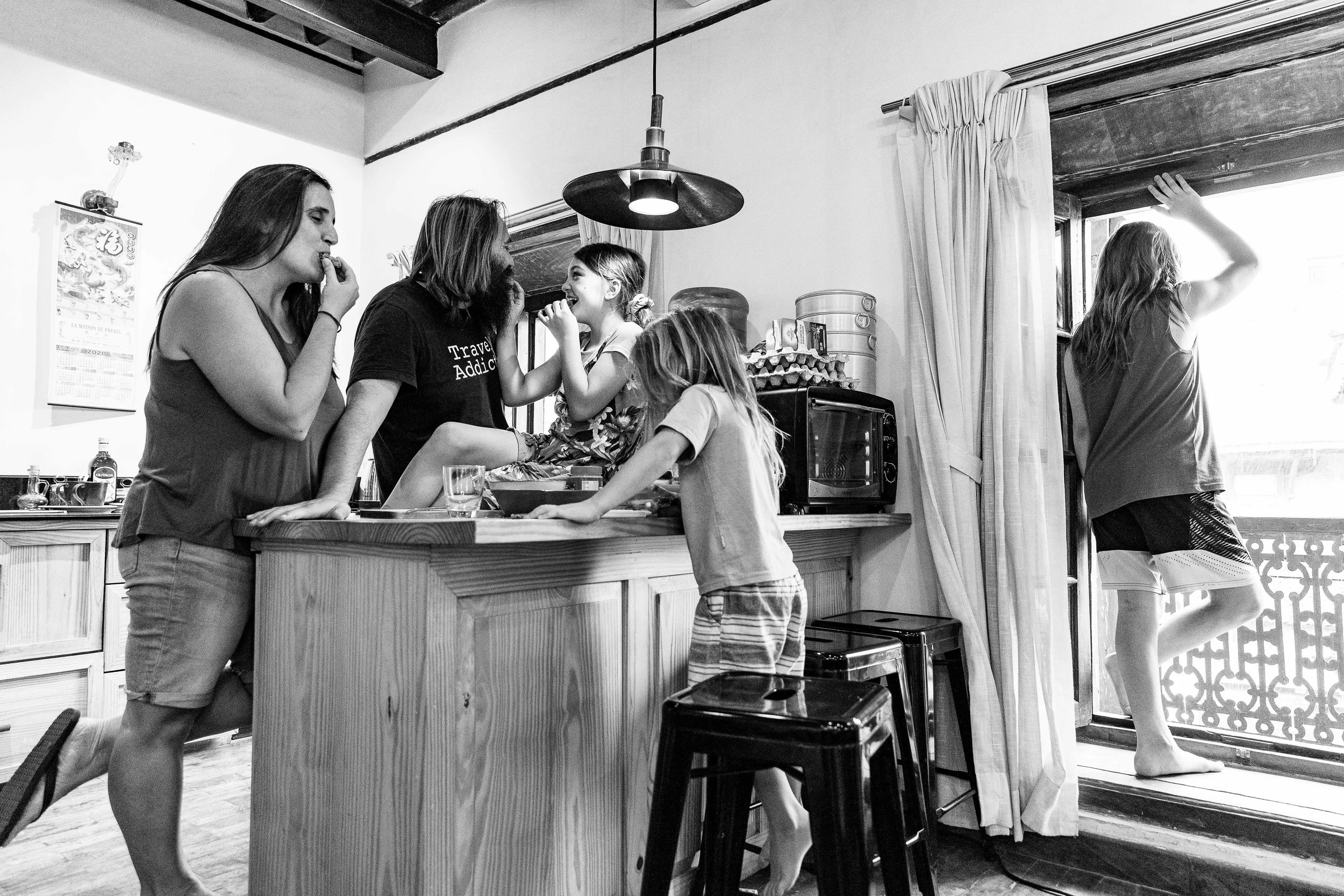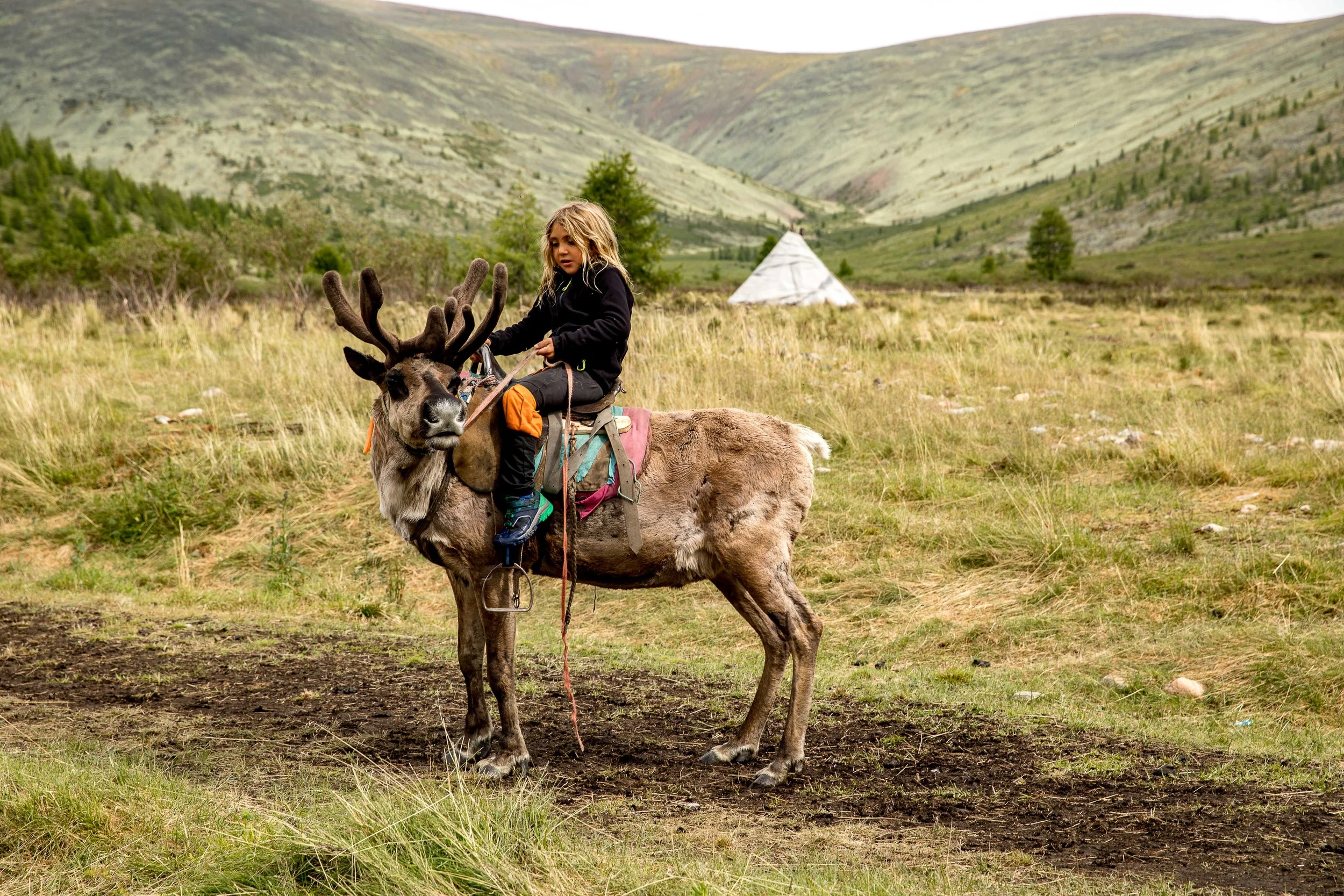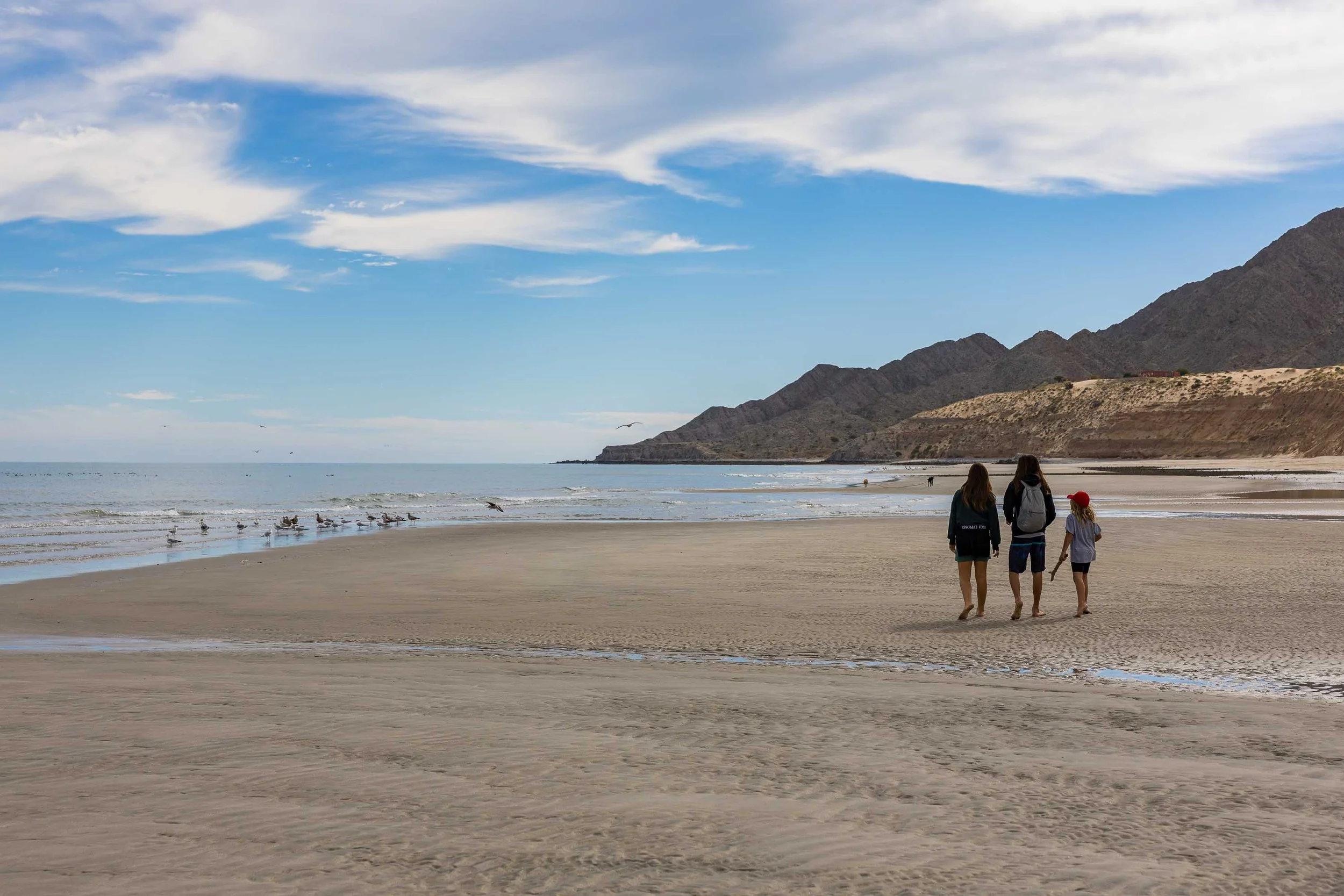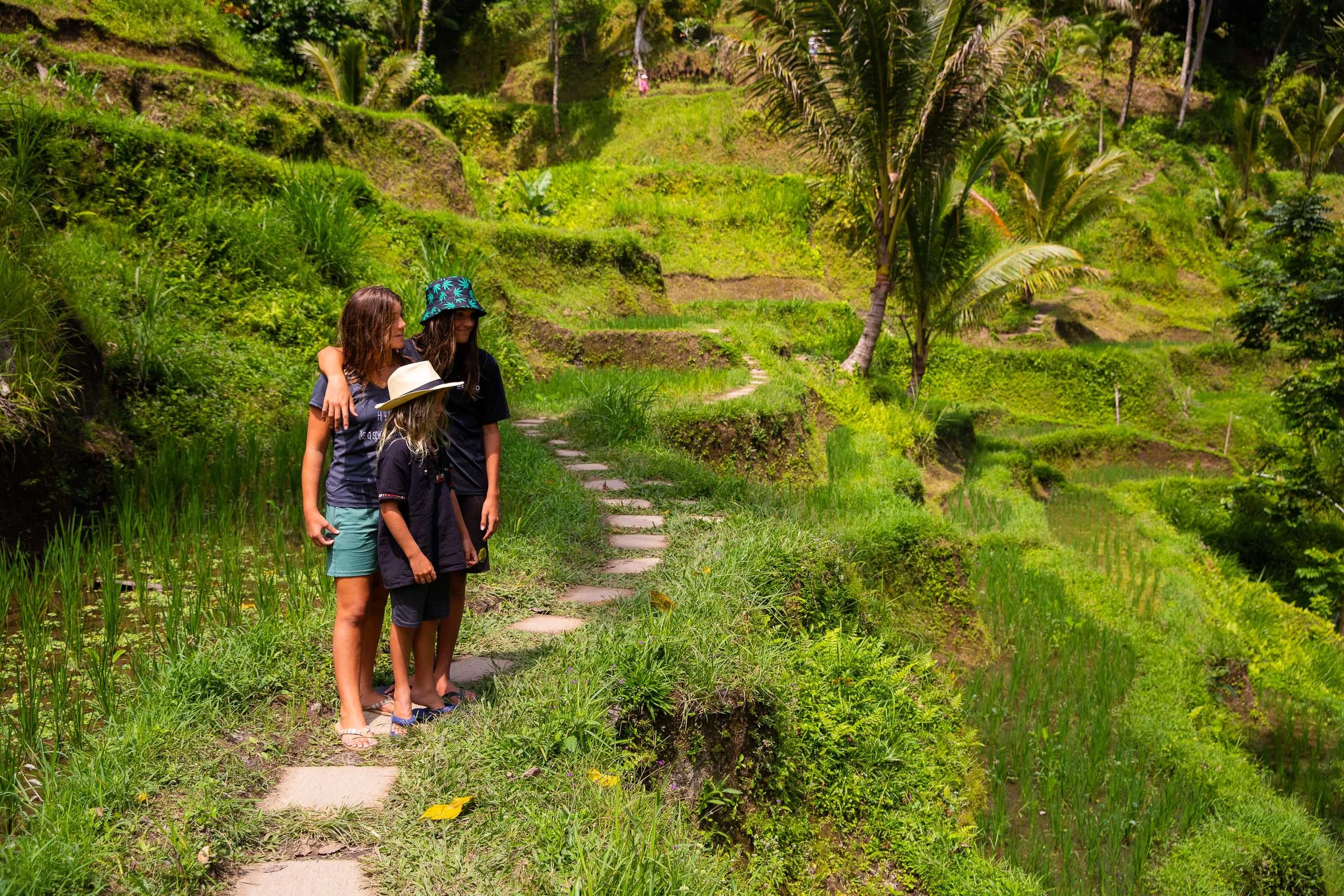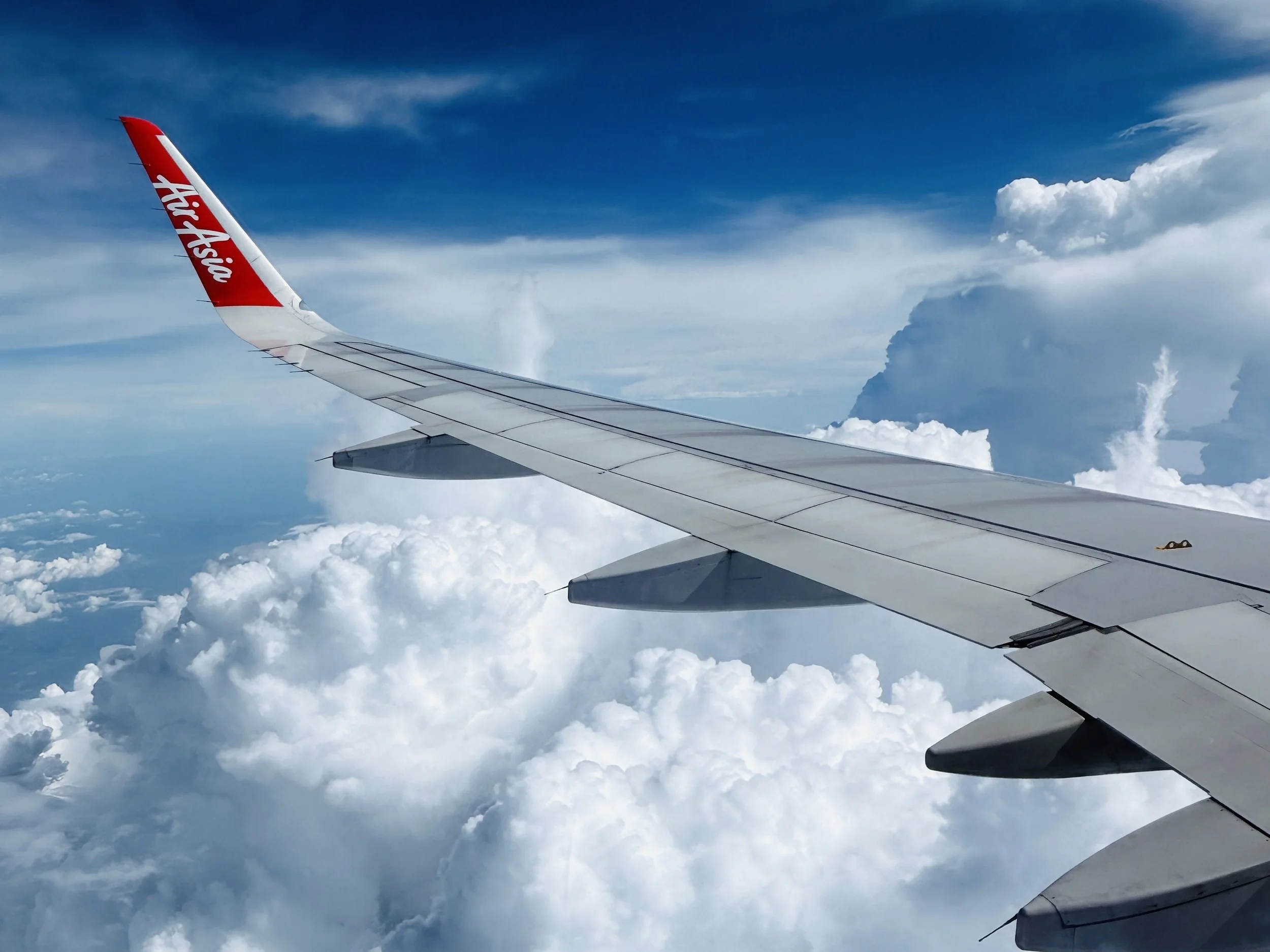Family-Friendly Accommodation: Hotels vs. Airbnbs vs. Resorts – Which is Right for You?
Traveling with kids means finding the right place to stay can make or break your trip. After seven years of full-time family travel, we’ve stayed everywhere—cozy city hotels, spacious Airbnbs, and relaxing all-inclusive resorts. Each has its perks, challenges, and perfect situations. In this guide, I share our real-world experiences to help you decide which option best suits your family’s style, budget, and trip goals.
Planning a family trip is exciting; you imagine the new sights, the delicious food, and the unforgettable experiences you’ll share together. But before you can jump on that plane or hit the road, there’s one big decision to make: Where are we going to stay?
And for many families, that’s where the overwhelm begins.
Should you book a hotel with its familiar comfort and convenience?
An Airbnb or vacation rental that feels like a home away from home?
Or a resort where everything you could want is right on site?
As a family of five who has been traveling full-time for over seven years, we’ve tried them all, sometimes out of choice, other times because that’s what was available. Each option has its pros, cons, and ideal situations, and over time, we’ve determined what works best, depending on our trip style, destination, and budget.
If you’re planning your next family adventure and wondering which accommodation is right for you, let’s break it down.
Celebrating my birthday in a beautiful hotel on Xandu Island in Türkiye
Hotels: Convenience and Reliability in One Package
Hotels are the old faithful of the travel world. Whether you’re staying in a small boutique property or a large international chain, you generally know what to expect. For families, this can be a huge relief, especially if you’re traveling to a new destination for the first time. Personally, one of my favorite parts of staying in a hotel is the included breakfast. I always check if it’s available before booking because there’s just something about heading down to the restaurant in the morning, coffee in hand, and enjoying a leisurely breakfast without having to cook or clean. It feels like a mini vacation within the vacation.
Why Hotels Can Be Great for Families
On-Site Amenities: From breakfast buffets to swimming pools, fitness centers, and sometimes even kids’ clubs, hotels offer conveniences that make traveling with children easier.
Daily Housekeeping: Let’s be honest, traveling with kids means things get messy quickly. Having someone tidy up daily is a small luxury that can make a big difference.
Service and Security: A front desk that can help with directions, call a taxi, or handle emergencies is a comforting safety net, especially in unfamiliar places.
Location, Location, Location: Hotels are often situated in central areas, close to popular attractions, restaurants, and transportation hubs.
Favorite breakfast for Luca in Doha, Qatar
The Downsides of Hotels
Space Can Be Tight: Standard hotel rooms often mean cramming everyone into one room. Some hotels offer family suites, but these can be expensive.
Limited Cooking Facilities: Without a kitchen, you’ll likely be eating out for every meal, which can get pricey (and exhausting if you have picky eaters).
Cost for Larger Families: You may need to book two rooms if the property doesn’t allow extra beds, and that can double your nightly rate.
Sharing the room in North Macedonia
When Hotels Work Best for Families
We’ve found hotels ideal for short city stays, layovers, or trips where we’re out exploring most of the day. For example, during our stop in Tokyo, we chose a centrally located hotel right next to the subway. The room was small, but we were barely there except to sleep. The convenience of being close to public transportation made it well worth the investment.
Airbnbs & Vacation Rentals: Your Home Away from Home
When we first started traveling full-time, Airbnbs quickly became a favorite. They gave us the space and flexibility we needed, especially when the kids were younger and eating at home was essential. Now that they’re older, having their own space has become just as important for maintaining a good balance during our travels. We all have different routines, and if we don’t have to share a single room, everyone can enjoy their time more (and get along a lot better).
Luca and Mass enjoying the couch in our Airbnb in Costa Rica
Why Vacation Rentals Can Be a Family’s Best Friend
More Space: Separate bedrooms, living rooms, and sometimes even outdoor areas mean everyone gets breathing room.
Kitchen Access: Being able to cook your meals can save a significant amount of money and help maintain routines for younger kids and picky eaters.
Laundry Facilities: A washer and dryer are a game-changer for long-term travel, reducing the need to overpack and preventing laundry emergencies.
Local Neighborhood Feel: Staying in a residential area can provide a more authentic experience of local life. However, these days, you can also find plenty of vacation rentals in very central locations.
Emma and Cosimo are enjoying the kitchen in our Airbnb in Phalaborwa, South Africa
The Downsides of Vacation Rentals
Inconsistent Quality: Not all listings live up to their photos or glowing reviews. We’ve learned to carry a few essential kitchen utensils, just in case the rental is missing something crucial. We have a video about them here!
Extra Fees: Cleaning, service, and “extra guest” charges can add up quickly.
Less Immediate Support: There’s no front desk to solve problems instantly. If the Wi-Fi stops working, you’re relying on your host to resolve the issue.
When Vacation Rentals Work Best for Families
We love Airbnb and other vacation rentals for more extended stays or when we want to slow down in one place. In Hoi An, Vietnam, we rented a house for a month that had a pool, a spacious kitchen, a lovely living area, and three bedrooms, plenty of space to spread out. The property even came with bikes, allowing us to get around town easily. The kids could have their own areas, we could cook most of our meals, and best of all, it truly felt like home.
Cosimo and Emma are enjoying the space in our Hoi An, Vietnam Airbnb
Resorts: All-Inclusive Fun and Relaxation
Resorts can feel like stepping into a bubble of vacation bliss. Everything you need - food, entertainment, and activities - is right on site. For some families, that’s precisely what’s required, especially when the goal is pure relaxation.
When we stayed at our first all-inclusive in Mexico Catalonia Costa Mujeres All Suites & Spa, after traveling full-time for three years, we loved it so much that we extended our stay by an extra five days. It was such a refreshing break from all our usual travel responsibilities that none of us wanted to leave.
Cosimo and Emma at Catalonia Costa Mujeres All Suites & Spa
Why Resorts Can Be Perfect for Families
All-Inclusive Options: Meals, snacks, drinks, and often activities are included, which makes budgeting easier.
Endless Entertainment: Pools, waterslides, kids’ clubs, and organized activities keep children happily occupied.
Safety and Security: Gated properties and staff on-site 24/7 give peace of mind.
Relaxation for Parents: Knowing the kids are busy (and safe) lets parents unwind.
Luca is going to order his food at Catalonia Costa Mujeres All Suites & Spa
The Downsides of Resorts
Less Local Immersion: If you don’t leave the property, you may miss out on authentic cultural experiences. We usually enjoy the resort itself and then explore the area afterward, but since we travel full-time, we can organize our time more flexibly.
Higher Upfront Cost: While you might save on meals and activities, the initial price can be steep.
Fixed Schedules: Meal times and activity slots may not always fit your family’s rhythm.
When Resorts Work Best for Families
Resorts are ideal for beach vacations, milestone celebrations, or moments when you simply need to recharge.
During our stay in Mexico, the kids loved the daily activities, and we appreciated knowing that meals were taken care of. They would wander off on their own to grab lunch from the different food stands, then spend the entire day swimming at the beach or playing in the pool. The entertainment team always had something fun planned, and the nightly shows were terrific. It was one of those rare trips where no one complained about being bored or hungry.
Mass and I enjoying a spa date at Catalonia Costa Mujeres All Suites & Spa
How to Decide: A Family Accommodation Checklist
When choosing where to stay, ask yourself:
Trip Length: Short trip or extended stay?
Purpose of Trip: Relaxation or exploration?
Budget: What’s your total nightly cost, including meals and transportation?
Space Needs: Will one room be enough, or do you need separate areas?
Food Plans: Do you want to cook or eat out?
Kids’ Ages & Needs: Do they need naps, play areas, or specific amenities?
Enjoying the space in our hotel in Hanoi, Vietnam
Our Personal Take
We’ve learned there’s no single “best” option; it all depends on the trip.
Hotels are our go-to for short city breaks or stopovers.
Airbnbs are ideal for longer stays, especially when we need space to work and homeschool.
Resorts are perfect when we want a break from planning and relax together.
The beauty is, you can mix and match. On one trip, we’ve stayed in a resort for a few days of rest, then moved to an Airbnb in the city for exploration.
Luca making his breakfast in Costa Rica
Final Thoughts
Over the years, we’ve stayed in just about every type of accommodation, from tiny city hotel rooms to sprawling vacation homes and all-inclusive resorts. Each one has its time and place, and our choice often depends on the destination, length of stay, and what we want from that trip.
Sharing some time on the same bed in Hawaii
Since we travel full-time, we often opt for Airbnb accommodations over other options, especially in countries with high living costs. Having a kitchen means we can cook our meals, which helps us keep costs down, and we also get the bonus of extra space for everyone to spread out.
That said, we still happily choose hotels for short stays, city breaks, or when we want the ease of included services. The cool thing is that more hotels are starting to offer apartment-style rooms with kitchenettes, which still include breakfast. During our recent stay in Phnom Penh, we experienced the best of both worlds: the space and cooking facilities of an apartment, combined with a delicious breakfast waiting for us every morning.
Ultimately, there’s no single “right” choice; it’s about finding the accommodation that best matches your travel style, needs, and priorities for that particular trip. And if you’re ever unsure which option might work best for your family, I’m happy to share my experience and help you find the perfect fit as your travel agent.
Top 5 Myths About Family Travel And What It’s Really Like
Think family travel is too expensive, too stressful, or just not worth it because "the kids won’t remember"? You’re not alone, but you might be surprised. After 7 years of full-time travel with our three kids, we’ve heard it all and lived through the truth behind the myths. In this post, we’re busting the 5 biggest misconceptions about traveling with kids and sharing what it’s really like to explore the world as a family.
When we first told people we were planning to travel the world full-time with our kids, the reactions were mixed. Some were excited for us, others were politely skeptical, and a few were downright shocked.
“Isn’t that dangerous?” “How can you afford it?” “But what about school?” If you’ve ever thought about taking your family on a big travel adventure, even for a few weeks, chances are you’ve heard (or thought) some of these same things.
The truth is, there are many myths surrounding what family travel looks like. After over 7 years on the road with our three kids, I can confidently say that while it’s not always easy, it’s far more doable and rewarding than most people think. So today, I want to bust some of the biggest myths I’ve heard (and believed myself at one point!) and share what family travel is really like.
View of Dubrovnik, Croatia from the walls
Myth #1: “It’s too expensive to travel with kids.”
This is the most common myth we hear. Yes, travel costs money. But so does staying home: mortgages, school fees, extracurriculars, entertainment, eating out, gas, and so much more. When we added it all up, we realized we could live more affordably while traveling, especially in countries with a lower cost of living.
What it’s really like:
We’ve found ways to make travel affordable by:
Choosing destinations where our money stretches further (think Southeast Asia, Central America, Eastern Europe).
Staying in apartments with kitchens, so we don’t eat out for every meal.
Traveling during off-peak seasons.
Booking longer stays to get weekly or monthly discounts.
Using travel points and miles strategically.
Prioritizing experiences over souvenirs or luxury stays.
We’ve even done house sitting, which means free accommodation in exchange for taking care of a home or pet (check out my recent blog post: Our House-Sitting Adventure in France). There are so many ways to make it work, even if you’re not doing it full-time.
Tip: If you need help figuring out how to plan a budget-friendly family adventure, I offer custom trip planning and self-booking tools. Just click here!
Enjoying our meal in our little home in Nepal
Myth #2: “Kids won’t remember the trip anyway.”
This one breaks my heart a little every time I hear it. It assumes that the only reason to travel with kids is so they can remember every detail. However, memory isn’t the only goal; impact is also important.
What it’s really like:
No, our kids don’t remember every meal or hotel. But they remember how it felt to ride a horse for the first time in Bhutan or a reindeer in Mongolia or a camel in the desert in Tunisia. They remember making dumplings in a local home in Nepal. They remember snorkeling with sharks, learning new words in different countries, and the friends they made along the way. These are life-shaping experiences that build resilience, curiosity, and adaptability.
Even if they don’t remember every moment, it becomes part of who they are.
Storytime:
When our youngest was three, we were visiting a temple in Bhutan, after getting a chance to light a candle inside, all he wanted to do was light them all! My husband and I were getting a bit anxious about how he was behaving. A young monk took him outside and sat with him on the step, letting him light as many matches as he wanted. They didn’t speak the same language, but they smiled and shared that moment until Luca was satisfied with his experience and ready to move on. Years later, he still remembers that moment. It stuck with him not because it was grand or expensive, but because it was meaningful.
Luca riding a reindeer in Mongolia
Myth #3: “You can’t relax when you travel with kids.”
To be honest, I kind of believed this one in the beginning. I imagined chaotic airport scenes, hangry meltdowns, and long flights with no sleep. And yes, we’ve had a few of those. But we’ve also found our rhythm.
What it’s really like:
Traveling with kids does require a different pace. We don’t try to cram 10 attractions into one day. Instead, we slow down. We take breaks. We schedule downtime and let the kids play in a park or swim in a pool. We create routines even while on the move. And we’ve learned that some of our most relaxing moments happen because we’re traveling: watching a sunset together, sipping tea on a balcony, walking through a quiet forest.
It’s not about replicating a couples-only getaway. It’s about finding moments of peace within the family chaos.
Tip: Many destinations offer family-friendly accommodations with spaces to cook, relax, and unwind. Those might be a great option to start with!
The kids going for a walk on a beach in Baja California, Mexico
Myth #4: “You have to stick to kid-friendly destinations.”
Many people assume that family travel means theme parks, all-inclusive resorts, or “kid zones.” And while those can be fun, they’re far from the only options.
What it’s really like:
Our kids have walked through the Colosseum in Rome, hiked through rice terraces in Bali, explored temples in Cambodia, and wandered through bustling markets in Morocco. They’ve learned about history, culture, and geography not from a textbook but from real life. And guess what? They loved it.
You can bring kids just about anywhere. It just takes a little extra planning, a bit more flexibility, and the mindset that kids can enjoy and appreciate more than we often give them credit for.
Bonus: Traveling off the beaten path helps your kids become more adaptable and globally aware, and it often leads to the most unforgettable adventures.
Kids exploring rice fields in Ubud, Bali
Myth #5: “Long-term travel ruins routines and education.”
This one might be the hardest myth to let go of, especially if you grew up believing that traditional school is the only path to a good education. I get it. We wrestled with this a lot when we first started.
What it’s really like:
Our kids are worldschoolers. That means they learn from the world around them through experiences, books, conversations, museums, projects, and online resources. Yes, we follow a bit of structure, but we also follow their interests. They’ve learned languages by speaking with locals, geography by crossing borders, and history by walking through ancient cities. And yes, they still do math.
More importantly, they’re learning how to learn. How to ask questions, think critically, adapt to new situations, and connect with people from all walks of life.
And routines?
We have our own kind of routines, morning learning, shared meals, and more. They may not look like a school bell and cafeteria lunch, but they’re grounding and consistent in their own way.
Sitting in Hierapolis Ancient Theater in Turkiye
So, What’s Family Travel Really Like?
It’s messy. It’s magical. It’s filled with unexpected challenges and surprising joys.
We’ve navigated foreign grocery stores without speaking the language, made friends in places we barely knew existed, cried from exhaustion, laughed till we cried, and created memories that I wouldn’t trade for anything.
Family travel isn’t about perfection. It’s about connection. It’s about choosing to step out of your comfort zone together and learning and growing side by side.
Thinking of Traveling with Your Family?
If you’ve been dreaming of taking your kids on an adventure but these myths have held you back, I want to encourage you. You don’t need to go full-time like we did. Even a short trip can be transformative.
Here’s how I can help:
✈️ Custom travel planning: I’ll help you find destinations, accommodations, and activities that match your family’s style and budget.
📌 Self-booking tools: Would you prefer to plan on your own? Use my booking links and still support our journey.
👉 Start here or reach out directly. I’d love to help you create a trip that your whole family will love.
Family travel is not only possible, it’s powerful. Don’t let the myths keep you from discovering what’s out there. You might find that the world becomes your best teacher, your playground, and your family’s most incredible bonding experience.
Where will your family’s next adventure take you?


